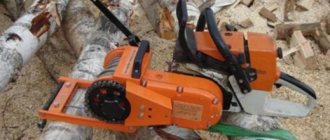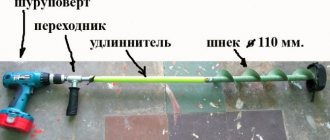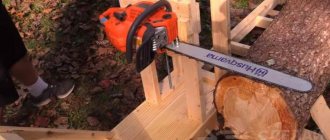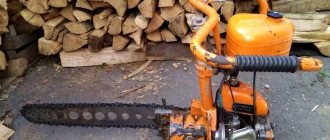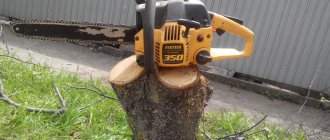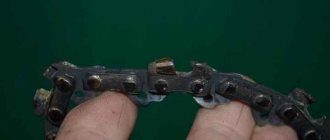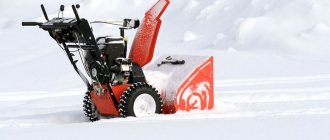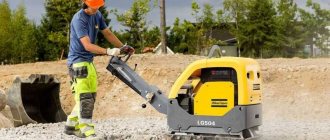A chainsaw is needed in construction, gardening, and landscaping - its presence greatly simplifies the performance of a number of wood processing tasks. The main component of this tool is the engine, the operation of which largely depends on the condition and settings of the carburetor. This is where the fuel mixture is prepared. This means that if the saw does not start, stalls, or does not provide the required power, it is likely that the reason for this is improper operation of the carburetor. Fortunately, in many cases you can deal with this on your own. Only for this you need to know and understand the structure and operating principle of this unit and, of course, the chainsaw itself.
- 2 Why is primary adjustment needed?
- 3 How to recognize carburetor failures?
- 4 Do-it-yourself disassembly: nothing complicated
4.1 Disassembling the chainsaw carburetor in the photo
The design of a chainsaw carburetor is simple and accessible
As with other chainsaw components, before repairing the carburetor, you should study its design in detail. This will help determine the true breakdown and quickly fix it. The design of a chainsaw carburetor consists of the following elements:
- Tube - equipped with a transverse damper that regulates the entry of air into the system;
- Diffuser – located next to the fuel inlet. As the diffuser narrows, the air flow rate into the system increases;
- Fuel needle - serves to distribute fuel;
- Float chamber - regulates the fuel level at the point of entry into the channel.
To better understand the design of the unit, you will need a diagram of a chainsaw carburetor. It clearly demonstrates the location and method of connecting the main elements of the unit.
The operating principle of a chainsaw carburetor is quite simple. The needle sprays fuel into the float chamber, after which the fuel is mixed with air. Next, the finished mixture enters the engine cylinder. The more fuel supplied to the engine, the higher the engine speed.
Regardless of the manufacturer and model of the chainsaw, each of the modern tools is equipped with carburetors that have an almost identical design and operate on the same principle. The main differences lie in the materials of the spare parts and their location in the carburetor structure.
What is a fuel pump? Principle of operation
The fuel pump is designed to supply fuel from the tank to the car engine. The main task is to deliver fuel at a certain pressure necessary for engine operation.
In this article we will tell you what a car fuel pump is, how it works and find out the difference between a mechanical and electric fuel pump.
What is a fuel pump?
Fuel pump - supplies fuel to the engine. It is needed because the engine and gas tank are at opposite ends of the car.
in modern cars : mechanical and electric. Mechanical fuel pumps are usually used in carburetor-type cars, where fuel is supplied to the carburetor under low pressure, and electric ones are used in injection-type fuel systems with fuel supplied under pressure.
Mechanical fuel pumps are mounted on the outside of the fuel tank, and electric fuel pumps are mounted on the inside of the fuel tank. And some engines have two fuel pumps: one that operates at high volumes, at low pressure, inside the fuel tank, and one that operates at low volumes, at high pressure, on or near the engine.
Mechanical fuel pumps work on the principle of sucking fuel from the fuel tank into the engine. The distance between the carburetor and the pump is small, so they can operate under low pressure.
The design of the car's power system and the operation of the fuel pump
Electric fuel pumps seem to push fuel into the engine. The operation of the electric fuel pump is controlled by the vehicle's electronic system, which takes into account throttle position, air-to-fuel ratio and exhaust emissions.
Since electric fuel pumps operate under pressure, they are quite noisy and heat up quickly. It is for this reason that they are placed in the fuel tank - the fuel cools the fuel pump and muffles noise.
How does a fuel pump work?
Gasoline pumps are started by an electric motor. When you turn the ignition switch on, the on-board computer gives a signal to start the fuel pump. An electric charge is supplied to the fuel pump. The motor inside the fuel pump begins to rotate within a few seconds and creates pressure in the fuel system.
If after two seconds the computer does not receive a signal that the engine is running, the fuel pump automatically turns off for safety reasons.
It is in the first two seconds after starting the engine that you can hear the fuel pump running.
Next, the fuel is sucked into the fuel pump through a tube and leaves the fuel pump through a one-way valve, enters the fuel filter, which traps dirt and debris and then goes into the engine. The fuel pump runs as long as the engine is running.
Most often, the fuel pump breaks down prematurely for two reasons: dirty fuel filters and the habit of driving on an empty tank. In both cases, the fuel pump works to the limit, exhausting its life much faster than it was intended by the design engineers. Therefore, do not be lazy to change fuel filters, especially if the quality of the fuel leaves much to be desired.
Adjusting a chainsaw carburetor - when is the procedure required?
Often chainsaw owners think about why the chainsaw shoots into the carburetor, or why gasoline does not flow into the chainsaw carburetor? In both cases, the cause of the malfunction lies in a failure of the unit’s factory settings, and to eliminate the breakdown, the chainsaw’s carburetor must be adjusted. A number of other signs will help you understand that the chainsaw carburetor needs to be adjusted:
- The engine does not start at all, or stalls immediately after starting - the reason for this may be a shortage of fuel coupled with an excess of air;
- Increased fuel consumption - in this case, the amount of exhaust gases rapidly increases. The reason for this situation should be sought in an increase in the amount of fuel and a decrease in the amount of air;
There are also a number of mechanical reasons that lead to the need to adjust the carburetor. These include:
- Strong vibration - it leads to damage to the protective cap, resulting in loss of fixation of all three adjusting screws;
- Wear of the piston part of the engine - in such a situation, adjusting the carburetor will only temporarily prolong the operation of the tool. To completely eliminate the problem, you will have to completely replace the piston group;
- The formation of blockages - they appear as a result of the use of low-quality gasoline, damage to the filter or scale. In such cases, it will be necessary to dismantle, disassemble and clean the carburetor.
In any of the above cases, it is better not to delay the procedure for adjusting or flushing the unit. Otherwise, this will lead to damage to other equally important elements of the chainsaw.
What to do if you have no experience and can’t adjust it yourself?
Due to lack of experience, adjusting the chainsaw may not work the first time, the saw will begin to work unstably, and starting the engine will be difficult. In this case, you need to repeat everything all over again, setting the adjusting screws to the initially recommended position (written at the beginning of the article, immediately after flushing the carburetor) and then follow the steps of the “Step-by-Step Instructions”.
For reference! Chinese carburetors are cheap and cost 1000-1500 rubles (you can look at how much it costs for your saw on Yandex.Market), some people come to the conclusion that it is easier to buy and replace, in the hope that it comes already configured and screwed on factory settings are set. This opinion is erroneous; any carburetor needs to be adjusted after installation.
How to properly adjust the carburetor on a chainsaw?
Before adjusting the carburetor on your chainsaw, you will need to learn the meaning of the three screws required for adjustment. These screws have certain markings and names:
- Screw “L” is necessary to adjust low speed;
- Screw “H” is required when tuning the motor to operate at high speeds;
- Screw "T" is needed to adjust the idle speed.
It is worth noting that some chainsaws are equipped with only one “T” screw, so the carburetors of such models are adjusted by manipulating only this screw.
No matter how many screws there are on the chainsaw, the factory carburetor settings are the most optimal for its operation. The screws themselves are initially used to configure the chainsaw to work in certain weather conditions.
The carburetors of chainsaws with three screws should be adjusted using screws “L” and “H”. To increase the speed, they should be turned clockwise. In order to lower the speed, the screws turn against it. To adjust the carburetor, you will need a special screwdriver for adjustment - it will not slip off the screws and damage the threads on their “caps”.
The carburetor adjustment process consists of two stages: initial and main. The adjustment algorithm is as follows:
- During the first stage, screws “L” and “H” must be tightened clockwise to the very end;
- After this, these screws need to be turned 1.5 turns in the opposite direction;
- At the second stage, you need to start the chainsaw and leave it for 10 minutes to completely warm up;
- Then start turning the screw “T” until the chainsaw motor starts to run stably and the chain on the bar does not rotate.
Do not rush when adjusting the chainsaw. It must be remembered that the slower you turn the screws, the better you will feel the changes in the operation of the tool’s engine.
Step-by-step disassembly instructions
The carburetor design of models of different brands is almost the same, so let’s take the Partner chainsaw as an example. We carefully remove each element and place it in order to make it easier to assemble later.
Recent Entries
Lilac perennials that are beautiful, compact and do not crowd out other plants Why when buying seedlings you should not take the sellers’ word for it and how to determine the age of the plant using 3 signs Tomato seedlings have turned purple or whitish: why the color has changed and how to save the plants
Carburetors of chainsaws from different manufacturers, if they differ, are not fundamentally different
The top cover is removed by unscrewing three bolts. Following it is foam rubber, an integral part of the air filter.
The arrows indicate the bolts that must be unscrewed to remove the cover.
Then we remove the fuel hose, followed by the drive rod.
The upper arrow points to the fuel hose, the lower arrow to the drive rod
Next, remove the cable end.
The arrow shows the cable tip that needs to be removed
We pull off the gasoline hose from the fitting on the left.
We also carefully remove the gasoline hose, which the arrow points to.
We finally disconnect the carburetor, it is ready for adjustment. Its mechanism is quite complex, therefore, if further disassembly of the carburetor is required, you should remove the elements very carefully - they are small, so they can get lost.
The carburetor consists of many small parts, which should be laid out in order when disassembling
How to check a chainsaw carburetor?
After adjustment, you need to check the acceleration, maximum speed and engine idle. While checking the first parameter, you should sharply press the gas trigger. If the motor does not begin to gain speed, then you need to turn screw “L” counterclockwise. In this case, one turn should not exceed 1/8 of the full circle of the screw.
To measure the maximum revolutions, you will need to engage the “H” screw. To increase the maximum number of revolutions, the screw is turned clockwise. To reduce the indicator, the screw must be turned in the opposite direction. It should be remembered that the maximum speed should not exceed 15 thousand.
For a final check of the chainsaw while idling, you need to start the tool and place it on a level place. Let the engine warm up and pay attention to the following elements of the chainsaw:
- The chain should not move;
- Engine - when you press the gas trigger, it should confidently gain speed until the set maximum limit is reached.
An important tip is that if the carburetor is configured correctly, the sound of the chainsaw engine will closely resemble the sound of a 4-stroke engine.
The carburetor of a Chinese chainsaw is adjusted and checked in a similar manner. The only difference is that the process of setting up such tools can take much longer - on average, about an hour. In addition, it should be remembered that adjustment of Chinese chainsaws is required much more often - it often needs to be done immediately after running in a new tool.
Initial adjustment and starting to use the saw
Most instruments come pre-configured by manufacturers.
During the running-in process, the correct operation is checked:
- When starting up for the first time, you need to ensure that the chainsaw operates in a gentle mode. A few hours after the start, it is recommended to cut small branches and trunks up to 10 cm thick.
- The chainsaw must start correctly, ensure a stable rotation speed of the sprocket and a smooth increase and decrease in power.
- Fuel consumption must correspond to the power used and in practice the saw should not go out, “sneeze”, smoke or run jerkily.
- There should be no extraneous knocks, pops or noises when the engine is running.
The following rules will help you stay safe:
- Mix gasoline and oil in accordance with the proportions specified by the manufacturers.
- Do not prepare the mixture in advance. The properties of gasoline and oil in a mixed state change over time. The exception is fuel for intensively used tools, however, even here the norm of 7 days should not be exceeded.
- Use oil designed for the chainsaw brand engine. A fuel mixture with a non-standard composition will damage it.
- When preparing the fuel mixture, take into account the influence of climatic conditions on the components.
How to remove a carburetor from a chainsaw?
Before cleaning the carburetor or repairing it, this element of the chainsaw will need to be dismantled and disconnected from other components. To do this, you must follow a certain procedure. The dismantling algorithm looks like this:
- First, remove the top cover by unscrewing the 3 bolts around its perimeter;
- Remove the filter shaped like a foam pad;
- Disconnect the fuel supply hose;
- Remove the drive rod;
- Disconnect the cable end;
- Carefully remove and completely pull out the fuel supply hose.
Try to perform each action as carefully as possible. Otherwise, there will be a risk of damage to important elements of the chainsaw.
How to clean the carburetor on a chainsaw?
It is necessary to flush the carburetor of a chainsaw in cases where low-quality fuel is used to refuel the tool, or the tool is used at extremely low temperatures. During the work, you need to try not to damage or lose small parts of the assembly. Cleaning the carburetor is performed in the following order:
- Remove the screws holding the carburetor body;
- Open the lid, remove the small parts of the assembly and place them on a towel;
- Carefully treat the walls of the case and all existing parts with compressed air from a can;
- If carbon deposits remain on the parts, wipe them with a rag moistened with a degreaser;
- Dry the body and parts;
- Assemble and install the carburetor on the chainsaw.
After cleaning the carburetor with your own hands, you will notice that the chainsaw motor will work much more stable and gain speed much faster.
Summing up
Having sufficient experience, the setup is completed in 5-10 minutes. Provided all carburetor parts are in good working order, the adjustment process should not cause any difficulties. If something is faulty in the carburetor, then you won’t be able to adjust it, no matter how hard you try. To do this, before making adjustments, you need to eliminate all faults.
I will write about what kind of malfunctions there are, how to find and fix them, in the next article about repairs, provided that this is of interest to you. Therefore, if the article helped, rate it and write in the comments below whether the second part of the article is needed. Thanks to all.

